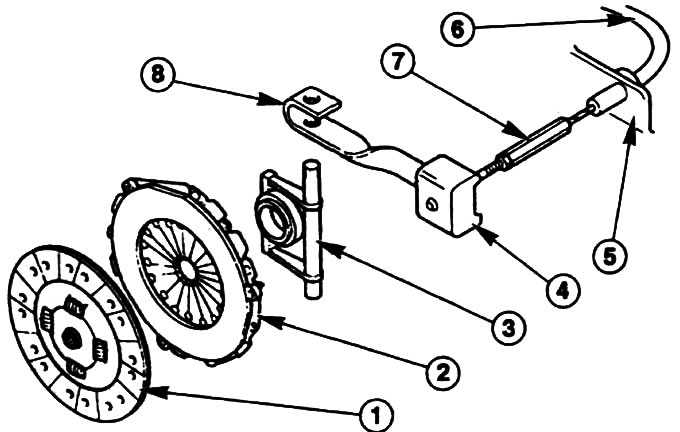The clutch pressure plate is rigidly connected to the engine flywheel, and the flywheel is attached to the engine crankshaft flange. Between the clutch pressure plate and the flywheel is the clutch disc, which presses the clutch pressure plate against the flywheel. The clutch disc is located on the splined drive shaft of the gearbox.
If you depress the clutch pedal, then the clutch release bearing is pressed through the clutch rod and the clutch release lever, and it is pressed against the force of the clutch pressure plate spring.
As a result, the clutch disc located between the flywheel and the clutch pressure plate becomes free, i.e. the power circuit between the engine and gearbox is removed. If you release the clutch pedal again, the clutch pressure plate presses the driven plate against the flywheel. Again, a force circuit is created between the engine and the gearbox, since the pressed clutch pressure plate is rigidly connected by splines to the gearbox shaft.
Each time the clutch pedal is pressed and released, a weak grinding process occurs, as a result of which the friction lining of the driven disk is erased. Thus, the clutch disc is a wear part. On average, one driven disk is enough for 100,000 km. Disc wear largely depends on the load (driving with a trailer) and the nature of the movement.
Due to the fact that the clearance of the clutch pedal changes with progressive wear of the friction linings of the clutch, it must be checked as part of a regular inspection and, if necessary, adjusted.

1 - Driven clutch disc; 2 - Clutch pressure plate; 3 - Clutch release mechanism; 4 - shock absorber; 5 - Counter support for clutch rod; 6 - Clutch rod; 7 - Adjusting screw; 8 - Clutch release lever
Visitor comments